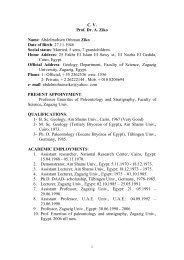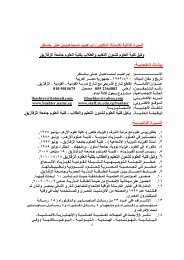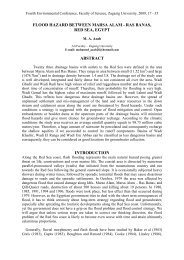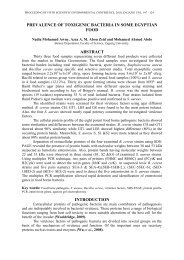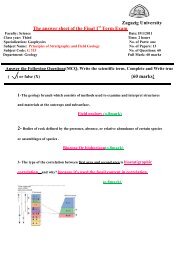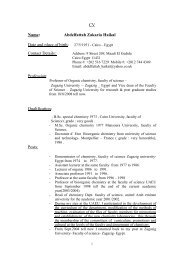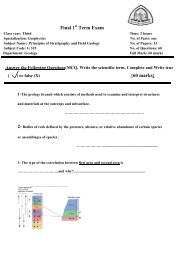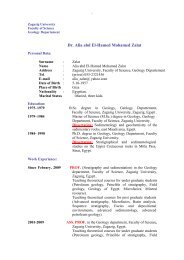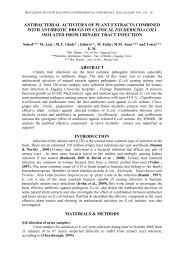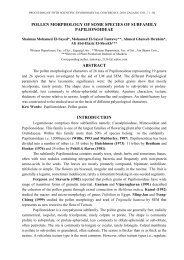GEOPHYSICS LETTERS
GEOPHYSICS LETTERS
GEOPHYSICS LETTERS
- No tags were found...
You also want an ePaper? Increase the reach of your titles
YUMPU automatically turns print PDFs into web optimized ePapers that Google loves.
60 Seismic study to recognize reef reservoirsadjacent groc.ps (Mitchum et ai, 1977- part 6). Reflection fi"ceconfiguration is indicative of uniform single lithology. In an evaporatecarbonateregime, it could indicate salt or massive earbonate reef-coreenvironments (Sangree and Widmier, 1979). Contirmous reflectionswith uniform amplitude and frequency from trace to trace arise fromrock layers that are uniform in their thickness and lithology over theregion covered by the section. They represent deposition during periodsof stable and uniform depositional conditions (Sangree and Widmier,1979). The high continuity and high amplitude facies in the shelf faciessuggests continuous beds deposited in a relatively widespread anduniform environment. Low amplitude seismic facies may indicate a zoneof one predominant lithologic type (Sangree and Widmier, 1979).Chaotic patterns, in which reflections are discontinuous, are oftenmounded or internally contorted, and frequently are distinguished bymany diffraction patterns. Discontinuous discordant reflections observedin chaotic configuration suggest a disordered arrangement of reflectionsurfaces and either a relatively high energy and variability of depositionor a disruption of beds after deposition (Sangree and Widmier, 1979).The Hammam Faraun seismic sequence is subdivided into number ofseismic facies units, according to their reflection configuration and theother parameters, such as amplitude and continuity on all the seismicsections in the available grid of the seismic data. The integration of theseseismic reflection elements with the available well data, and thegeological information of the area is a good prediction to depositionalenvironment and lithology. The high continuity and high amplitudeseismic facies units are interpreted, according to the seismicconfiguration patterns conjunct with the available well data andgeological information of the area, as anhydrite. Low and variableamplitudes with continuous reflections, seismic facies units, areinterpreted according to the conjunction between seismic, well data, andgeological information about the area as inter-bedded nullipore, andevaporite. The chaotic and amplitude anomaly seismic facies units areinterpreted as Nullipore rock (reefs), as represented on Figs. (9), to (12).Mapping and distribution to Nullipore rock:The mapping of the seismic facies units, or their correspondinglithology, on a base map is carried out by subdivided the Hammam



